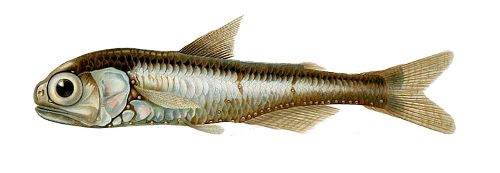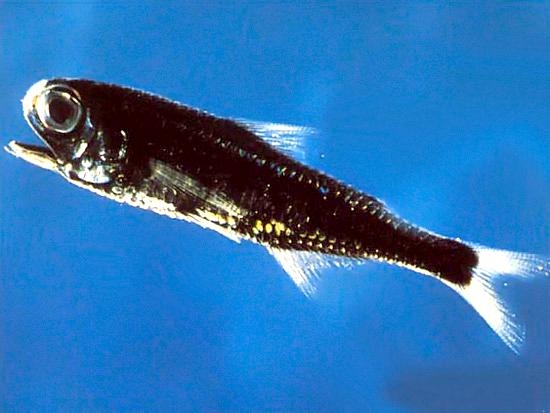

The known specimens are all immature, though already with large olfactory organs and well-developed denticular plates on the tip of the snout bearing 3-4 curved teeth each. The males are much smaller and dark brown in color, measuring up to 1.6 cm (0.63 in) long and lacking the illicium and esca. There is a small hyoid barbel, although it is vestigial in adult females. The esca has a fan-shaped appendage in front and another short appendage on the back the tip is white with scattered large melanophores. The illicium ("fishing rod") and esca (lure) are attached to the snout.
LANTERN FISH SKIN
The fish is reddish brown to black in color its skin is covered with numerous close-set spines. The eye itself lies beneath the skin and appears through a translucent patch.

There is a large oval pit in front of each eye in specimens larger than 42 mm. The jaws are filled with slender, recurved, depressible teeth of mixed large and small sizes. The female horned lantern fish measures up to 23 cm (9.1 in) in length and is long and slender, with a large head and jaws of equal length.

Specimens were caught at depths from 650 to over 2000 m (2130–6560 ft), while larvae have been recovered close to the surface to a depth of 35 m (115 ft). Specimens have also been captured in other locations, including New Guinea, the South China Sea, Venezuela, and the Mozambique Channel, suggesting a wide oceanic distribution in tropical and subtropical waters. The horned lantern fish occurs in the Pacific Ocean from Baja California south to the Marquesas Islands and the Gulf of California.


 0 kommentar(er)
0 kommentar(er)
